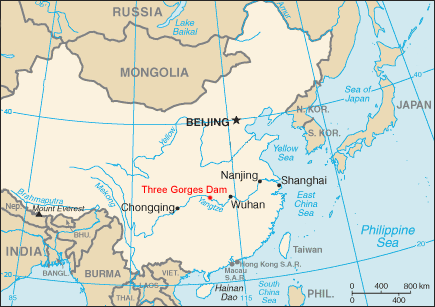Yangtze Patrol: Difference between revisions
Jump to navigation
Jump to search

imported>Caesar Schinas m (Bot: Update image code) |
Pat Palmer (talk | contribs) m (Text replacement - "World War 2" to "World War II") |
||
| Line 23: | Line 23: | ||
The [[Yangtze River|Yangtze]] is China's longest river.<ref name=KempTolley/> Ocean-going vessels were able to proceed as far upstream as the cities of [[Wuhan]]. Destroyers and Cruisers sometimes served in the ''YangPat''. But the upper Yangtze, and the Yangtze's [[tributary|tributaries]] were patrolled by specially built [[river gunboat]]s, like the [[USS Panay (PR-5)|USS ''Panay'']]. | The [[Yangtze River|Yangtze]] is China's longest river.<ref name=KempTolley/> Ocean-going vessels were able to proceed as far upstream as the cities of [[Wuhan]]. Destroyers and Cruisers sometimes served in the ''YangPat''. But the upper Yangtze, and the Yangtze's [[tributary|tributaries]] were patrolled by specially built [[river gunboat]]s, like the [[USS Panay (PR-5)|USS ''Panay'']]. | ||
The USS ''Panay'' was the first American vessel to be sunk by Japanese forces during [[World War | The USS ''Panay'' was the first American vessel to be sunk by Japanese forces during [[World War II]]. | ||
<gallery> | <gallery> | ||
Revision as of 09:50, 23 February 2024
The Yangtze Patrol was part of the US Navy's Asiatic Squadron.[1][2] Under the unequal treaties the United States, Japan, and various European powers were allowed to cruise China's rivers and coastal waters, protecting their citizens, their property, and their religious missions.
The Yangtze is China's longest river.[1] Ocean-going vessels were able to proceed as far upstream as the cities of Wuhan. Destroyers and Cruisers sometimes served in the YangPat. But the upper Yangtze, and the Yangtze's tributaries were patrolled by specially built river gunboats, like the USS Panay.
The USS Panay was the first American vessel to be sunk by Japanese forces during World War II.
See also
References
- ↑ 1.0 1.1 Kemp Tolley (1971). Yangtze Patrol: The U.S. Navy in China. U.S. Naval Institute Press. Retrieved on 2008-04-21.
- ↑ Captain Bernard D. Cole U.S. Navy (Retired). The Real Sand Pebbles. Retrieved on 2008-04-21.


